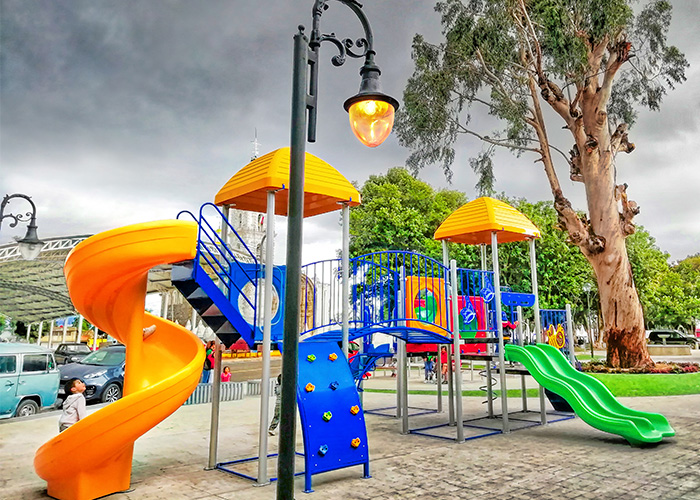Public parks are spaces that have become more important every day, however, these places can also present risks to the safety of users; Therefore, it is necessary to take preventive measures to avoid risk situations and promote a culture of prevention.
For urban planners, architects or designers of public spaces, it is crucial to guarantee that parks have the correct security elements, through which an atmosphere of tranquility and well-being is built for citizens who come to enjoy public areas, since whether recreational, sports or living.
It is necessary to take preventive measures to avoid risk situations and promote a culture of prevention.
Why are design and correct planning key to ensuring safety in parks?
Public spaces are places where people can have moments of recreation and since they are outdoor places, they need to be safe for proper use.
The planning and design of public spaces must pay attention to various aspects, such as the correct design of the space, the integration of the correct furniture, adequate lighting for extended use, safe surfaces and access for all, among other points that must be considered. evaluate so that these areas are safe and for everyone. But it is right at the beginning of a project when these elements must be considered a priority so that the public space really contributes to social, intellectual, emotional and physical development.
The consequences of a lack of planning focused on the safety of public spaces translates into various physical dangers or possible acts of vandalism for users, in addition to creating
There is little social development within the community as there are no areas where they can constantly carry out activities.
What are the elements that mustn be considered for the safe design of Public Spaces?
It must be kept in mind that the correct design of spaces involves the following elements:
-
Access:
The planning of public spaces must take into account the design of established routes, as well as paths and very specific areas, which help maintain the presence of people in the circuits, as a self-surveillance strategy.
An important technical fact is that the paths measure 2 to 2.5 meters, because in case of an emergency, it will help emergency units enter
-
Seats – Shadows
NOM-001-SEDATU-2021 PUBLIC SPACES IN HUMAN SETTLEMENTS mentions that all public spaces must have furniture for sitting and resting, considering that at least 30% to 50% of said furniture must have shade with a minimum average of 1 place-furniture per 100 inhabitants.
And it must have natural or built shading elements that cover at least 30% of its total surface. This includes: 100% shade in rest and waiting areas, a minimum of 50% in children's play and exercise areas, and a minimum of 50% over bleachers or spectator areas .
A solution to meet this regulation are sails whose main function is to limit direct solar incidence, improving the microclimatic comfort of the space.
-
Protection/Supervision
It is necessary to include mechanisms and tools that make the park areas visible; however, it must be considered that if a space is safe for a woman and/or a girl, it is safe for everyone.
If public spaces are dark, abandoned, dirty, with overgrown vegetation, or if things like cameras or emergency phones are missing, then they are potentially unsafe for everyone.
Safe public parks are characterized by easy access, good lighting so that users can see and be seen, easy-to-read signage to help users find their way, well-defined and well-maintained paths, general visibility of the entire site, and free of places where some people could hide.
The social objective of public spaces is to create opportunities for communication and encounter, as well as reduce the rates of violence, marginalization, addiction consumption and bad lifestyle habits.










